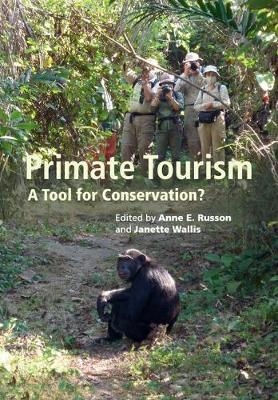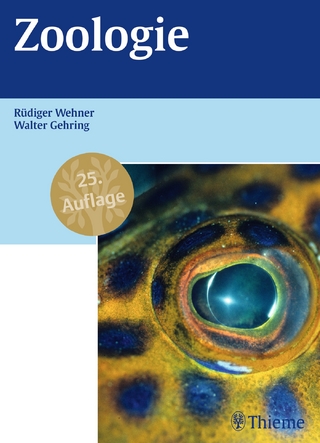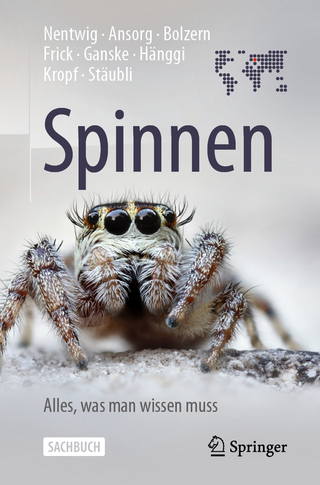
Primate Tourism
Cambridge University Press (Verlag)
978-1-108-46467-3 (ISBN)
Primate tourism is a growing phenomenon, with increasing pressure coming from several directions: the private sector, governments, and conservation agencies. At the same time, some primate sites are working to exclude or severely restrict tourism because of problems that have developed as a result. Indeed, tourism has proven costly to primates due to factors such as disease, stress, social disruption, vulnerability to poachers, and interference with rehabilitation and reintroduction. Bringing together interdisciplinary expertise in wildlife/nature tourism and primatology, experts present and discuss their accumulated experience from individual primate sites open to tourists, formal studies of primate-focused tourism, and trends in nature and wildlife tourism. Chapters offer species- and site-specific assessments, weighing conservation benefits against costs, and suggesting strategies for the development of informed guidelines for ongoing and future primate tourism ventures. Primate Tourism has been written for primatologists, conservationists and other scientists. It is also relevant to tourists and tourism professionals.
Anne E. Russon is a Professor of Psychology at Glendon College, York University, Toronto, Canada, whose research focuses on learning and intelligence in ex-captive Bornean orangutans. She is a member of the Scientific Advisory Board to the Borneo Orangutan Survival Foundation, Indonesia, and several orang-utan conservation agencies. She has edited two volumes for Cambridge University Press: The Evolution of Thought: Evolution of Great Ape Intelligence (with D. R. Begun, 2004) and Reaching into Thought: The Minds of the Great Apes (with K. Bard and S. Parker, 1996). Janette Wallis has published extensively on a wide range of issues in primatology, including conservation. Currently, she is the Editor of the African Conservation Telegraph, the newsletter of the Society for Conservation Biology-Africa Section and the Budongo Forest Research Station's newsletter. She is on the Board of Directors for the Society for Conservation Biology-Africa Section, and Vice President for Conservation for the International Primatological Society. Previously, she has served as the Series Editor of the American Society of Primatologists' Book Series.
List of contributors; Part I. Introduction: 1. Reconsidering primate tourism as a conservation tool: an introduction to the issues Anne E. Russon and Janette Wallis; Part II. Asian Primates: 2. Tourism, infant mortality and stress indicators among Tibetan macaques at Huangshan, China Carol M. Berman, Megan D. Matheson, Jin-Hua Li, Hideshi Ogawa and Consuel S. Ionica; 3. Provisioning and tourism in free-ranging Japanese macaques Hiroyuki Kurita; 4. Proboscis monkey tourism: can we make it 'ecotourism'? Heathor C. Leasor and Oliver J. Macgregor; 5. Orangutan tourism and conservation: 35 years' experience Anne E. Russon and Adi Susilo; 6. The impact of tourism on the behavior of rehabilitated orangutans (Pongo abelii) in Bukit Lawang, North Sumatra, Indonesia David F. Dellatore, Corri D. Waitt and Ivona Foitova; Part III. African Primates: 7. Lemurs and tourism in Ranomafana National Park, Madagascar: economic boom and other consequences Patricia C. Wright, Benjamin Andriamihaja, Stephen J. King, Jenna Guerriero and Josephine Hubbard; 8. Some pathogenic consequences of tourism for nonhuman primates Robert M. Sapolsky; 9. Baboon ecotourism in the larger context Shirley C. Strum and Deborah L. Manzolillo Nightingale; 10. Mountain gorilla tourism as a conservation tool: have we tipped the balance? Michele L. Goldsmith; 11. Evaluating the effectiveness of chimpanzee tourism James S. Desmond and Jenny A. Z. Desmond; Part IV. Neotropical Primates: 12. The impact of tourist group size and frequency on neotropical primate behavior in Tambopata, Peru Chloe Hodgkinson, Christopher Kirkby and Eleanor J. Milner-Gulland; 13. Interactions between tourists and white-faced monkeys (Cebus capucinus) at Manuel Antonio National Park, Quepos, Costa Rica Laurie Kauffman; 14. Effects of tourism on Ecuadorian primates: is there a need for responsible primate tourism? Stella de la Torre; Part V. Broader Issues: 15. Economic aspects of primate tourism associated with primate conservation Glen T. Hvenegaard; 16. Considering risks of pathogen transmission associated with primate-based tourism Michael P. Muelhlenbein and Janette Wallis; 17. Guidelines for best practice in great ape tourism Elizabeth A. Williamson and Elizabeth J. Macfie; Part VI. Conclusion: 18. Primate tourism as a conservation tool: a review of the evidence, implications, and recommendations Anne E. Russon and Janette Wallis; Index.
| Erscheinungsdatum | 23.09.2018 |
|---|---|
| Zusatzinfo | Worked examples or Exercises; 22 Tables, black and white; 28 Halftones, unspecified; 28 Halftones, black and white; 22 Line drawings, black and white |
| Verlagsort | Cambridge |
| Sprache | englisch |
| Maße | 170 x 245 mm |
| Gewicht | 640 g |
| Themenwelt | Naturwissenschaften ► Biologie ► Zoologie |
| Sozialwissenschaften ► Ethnologie | |
| Sozialwissenschaften ► Soziologie | |
| Wirtschaft | |
| ISBN-10 | 1-108-46467-X / 110846467X |
| ISBN-13 | 978-1-108-46467-3 / 9781108464673 |
| Zustand | Neuware |
| Haben Sie eine Frage zum Produkt? |
aus dem Bereich


